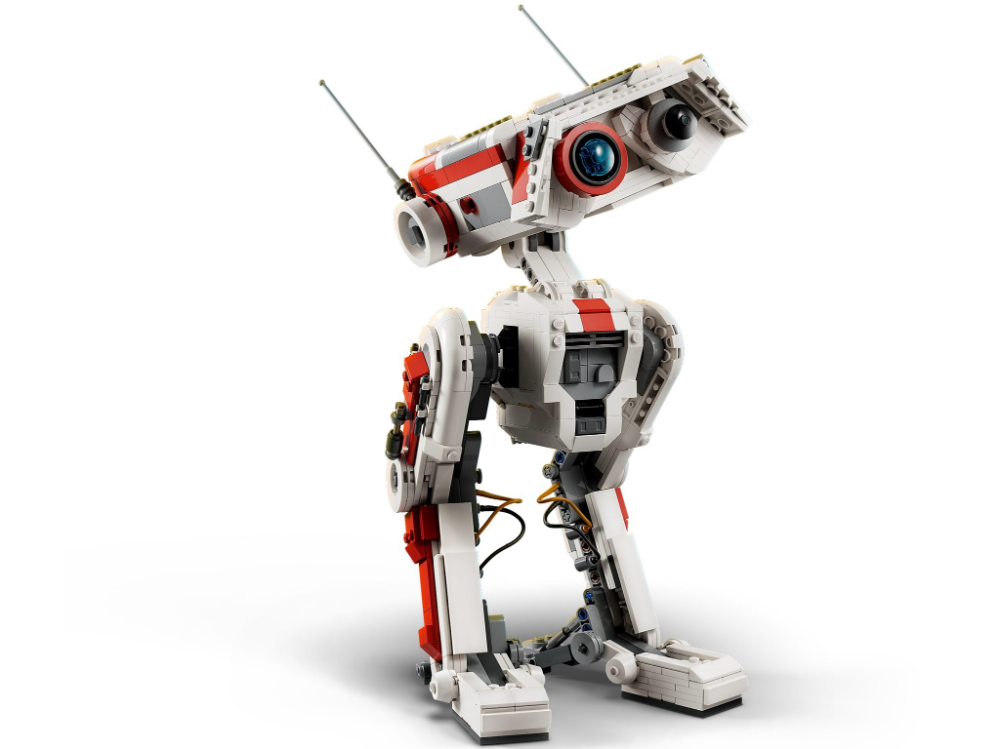The world of software development is in perpetual motion, driven by the ceaseless march of innovation. As new computing paradigms emerge and existing technologies evolve at breakneck speeds, the tools developers use must keep pace. Today, we’re witnessing a pivotal moment with the unveiling of next-gen development kits, revolutionary platforms designed to empower creators with unprecedented capabilities. These aren’t just incremental updates; they represent fundamental shifts in how applications are conceived, built, and deployed, promising to unlock new frontiers in artificial intelligence, immersive experiences, quantum computing, and beyond. This new wave of developer tools is set to accelerate the pace of digital transformation, fundamentally reshaping industries and propelling us into a future previously only imagined.
The Evolution of Developer Tools: A Historical Perspective
To truly appreciate the significance of these next-gen development kits, it’s vital to understand the journey of developer tools. From humble beginnings to highly sophisticated integrated environments, each era has brought new efficiencies and opened doors to more complex creations.
A. Command-Line Compilers and Text Editors
In the early days of computing, development was a stark, text-based affair. Developers primarily interacted with systems through command lines.
- Manual Compilation: Programmers wrote code in text editors and then manually invoked compilers (like GCC or Visual C++) from the command line to translate source code into executable programs. This process was often slow and error-prone, with cryptic error messages.
- Lack of Integrated Features: Debugging was a tedious process, often involving print statements or using low-level debuggers that offered minimal abstraction. There was no integrated environment for coding, compiling, and debugging.
- Basic Version Control: Version control, if it existed at all, was rudimentary, often relying on manual file backups or simple systems like SCCS or RCS, making collaboration difficult and error tracking inefficient.
- Limited Libraries: Developers often had to write a significant amount of code from scratch, as extensive pre-built libraries and frameworks were not readily available, increasing development time for basic functionalities.
B. The Rise of Integrated Development Environments (IDEs)
The late 1990s and early 2000s saw the popularization of Integrated Development Environments (IDEs), which revolutionized developer productivity by bundling essential tools into a single application.
- Unified Workflow: IDEs like Eclipse, Visual Studio, and IntelliJ IDEA combined text editors, compilers, debuggers, and build automation tools into a seamless interface, significantly streamlining the development workflow.
- Advanced Debugging: Visual debuggers allowed developers to set breakpoints, inspect variables, and step through code execution line by line, drastically simplifying bug identification.
- Code Completion and Syntax Highlighting: Features like intelligent code completion, syntax highlighting, and refactoring tools improved code quality and writing speed.
- Integrated Version Control: IDEs began integrating with version control systems like CVS and Subversion, and later Git, making it easier for teams to collaborate and manage code changes.
C. Emergence of Specialized Tools and Ecosystems
As software became more diverse (web, mobile, cloud), specialized tools and richer ecosystems emerged, moving beyond generic IDEs.
- Web Development Frameworks: The explosion of the internet led to powerful web frameworks (e.g., Ruby on Rails, Django, Node.js) and frontend libraries (e.g., React, Angular, Vue.js), which provided pre-built components and conventions, accelerating web application development.
- Mobile Development Kits: Dedicated SDKs (Software Development Kits) for iOS (Xcode) and Android (Android Studio) provided platform-specific tools, emulators, and APIs for mobile app creation.
- Cloud-Native Tools: The rise of cloud computing brought about cloud-specific SDKs, command-line interfaces (CLIs), and Infrastructure as Code (IaC) tools (e.g., AWS CLI, Terraform), enabling programmatic management of cloud resources.
- Containerization and Orchestration: Tools like Docker and Kubernetes revolutionized deployment, abstracting away underlying infrastructure and simplifying application portability. Developer kits began to integrate with these technologies.
This continuous evolution has set the stage for today’s next-gen development kits, which build on these foundations while embracing radically new paradigms.
Defining Next-Gen Development Kits: Core Characteristics
Today’s cutting-edge development kits are distinguished by several core characteristics that set them apart, designed to meet the demands of emerging technologies and complex distributed systems.
A. AI-Native Development Capabilities
A defining feature is the deep integration of Artificial Intelligence (AI) into the development process itself. These kits are not just for building AI applications; they leverage AI to enhance the act of building.
- AI-Powered Code Generation/Completion: Tools like GitHub Copilot (leveraging large language models) suggest code snippets, complete functions, and even generate entire blocks of code based on comments or context, drastically speeding up development and reducing boilerplate.
- Intelligent Debugging and Error Analysis: AI assists in identifying and suggesting fixes for bugs, analyzing crash reports, and even predicting potential issues before runtime.
- Automated Testing and Optimization: AI can generate test cases, perform intelligent fuzzing, and optimize code for performance, security, or resource efficiency.
- Natural Language to Code: Some kits allow developers to describe their desired functionality in natural language, and AI translates it into code, democratizing development for a wider audience.
B. Cloud-Native and Serverless First
Next-gen kits are built with cloud-native architectures and serverless computing in mind, simplifying the development of distributed, scalable applications.
- Simplified Cloud Resource Provisioning: Seamless integration with Infrastructure as Code (IaC) tools and cloud provider APIs allows developers to define and provision cloud resources directly from their development environment.
- Serverless-Aware Debugging: Enhanced debugging capabilities for serverless functions, allowing developers to trace execution across distributed services and identify issues in event-driven architectures.
- Container-Native Workflows: Deep integration with Docker and Kubernetes, allowing developers to containerize, test, and deploy applications in consistent environments from their local machine to the cloud.
- Managed Service Abstraction: Tools provide higher-level abstractions over complex managed cloud services (databases, message queues, AI/ML services), allowing developers to consume them with minimal configuration.
C. Immersive Development Environments (AR/VR/Metaverse)
As spatial computing evolves, next-gen kits are enabling developers to build for and within immersive environments.
- Spatial Design Tools: Tools for designing 3D environments, virtual objects, and interactive experiences for AR, VR, and metaverse platforms.
- Low-Code/No-Code for Immersive Content: Simplifying the creation of complex 3D scenes and interactions without extensive 3D modeling or game development expertise.
- Real-time Collaboration in Virtual Spaces: Developers can collaborate on projects within shared virtual environments, reviewing designs, debugging code, or building prototypes together.
- Hardware-Agnostic SDKs: Providing generalized SDKs that can target various AR/VR headsets and devices, simplifying cross-platform development for immersive experiences.
D. Quantum-Ready Toolchains
While still nascent, some next-gen kits are beginning to offer early access and specialized tools for quantum computing development.
- Quantum Programming Languages/SDKs: Providing specific languages (e.g., Qiskit, Cirq) or SDKs to write and simulate quantum algorithms.
- Quantum Simulators: Tools that emulate quantum hardware on classical computers, allowing developers to test quantum circuits and algorithms without access to a physical quantum computer.
- Cloud Access to Quantum Hardware: Seamless integration with cloud-based quantum computing services, allowing developers to run their quantum programs on actual quantum processors.
E. Enhanced Observability and Diagnostics
For complex, distributed systems, next-gen kits provide deeper insights into application behavior and performance.
- Distributed Tracing Integration: Built-in tools for visualizing the flow of requests across multiple services in microservices architectures, identifying bottlenecks.
- Real-time Metrics and Logging: Integrated dashboards and analytics for monitoring application health, performance metrics, and centralized logs directly within the development environment.
- Proactive Anomaly Detection: AI-driven tools that can detect unusual patterns in application behavior and alert developers to potential issues before they impact users.
F. Unified Multi-Platform Development
Recognizing the fragmented nature of modern computing, next-gen kits aim for more unified development experiences across various platforms.
- Cross-Platform Frameworks: Enhanced support for frameworks (e.g., Flutter, React Native, .NET MAUI) that allow developers to write code once and deploy to multiple platforms (web, mobile, desktop) from a single codebase.
- WebAssembly (Wasm) Integration: Broader support for WebAssembly, enabling high-performance code written in languages like C++, Rust, or Go to run natively in web browsers and other environments, expanding the reach of existing codebases.
Transformative Impact of Next-Gen Development Kits
These advanced development kits are not just making developers’ lives easier; they are fundamentally transforming the software development lifecycle and driving innovation across industries.
A. Accelerating Innovation and Time-to-Market
The most profound impact is the significant acceleration of the innovation cycle.
- Rapid Prototyping: AI-assisted coding, low-code/no-code capabilities, and immediate access to cloud resources allow developers to prototype ideas at lightning speed, testing concepts and iterating rapidly.
- Faster Feature Delivery: Streamlined workflows, automated testing, and seamless deployment pipelines mean new features and updates can be delivered to users much quicker, giving businesses a crucial competitive edge.
- Reduced Development Bottlenecks: Automation of repetitive tasks and intelligent assistance frees developers from tedious work, allowing them to focus on complex problem-solving and creative endeavors.
B. Democratizing Advanced Technologies
Next-gen kits are lowering the barrier to entry for complex and emerging technologies, making them accessible to a broader developer base.
- AI for Everyone: Pre-built AI models, simplified APIs for machine learning services, and AI-powered coding assistants make it easier for developers without deep AI expertise to integrate powerful AI capabilities into their applications.
- Immersive Experiences Simplified: Tools that abstract away the complexities of 3D rendering, physics engines, and spatial tracking enable more developers to build AR/VR and metaverse applications without specialized game development skills.
- Cloud Accessibility: Simplified cloud provisioning and serverless abstractions allow developers to deploy scalable cloud-native applications without extensive infrastructure knowledge.
C. Enhancing Software Quality and Reliability
By integrating intelligent analysis and automation, these kits inherently lead to more robust and reliable software.
- Proactive Bug Detection: AI-driven code analysis and intelligent testing identify potential bugs and vulnerabilities earlier in the development cycle, reducing the cost and effort of fixing them later.
- Consistent Deployments: Deep integration with IaC and containerization ensures that environments are consistent from development to production, minimizing deployment-related issues and configuration drift.
- Improved Performance: AI can optimize code for performance, and integrated observability tools provide the insights needed to identify and resolve performance bottlenecks in distributed systems.
D. Fostering Collaboration and Efficiency
Next-gen kits are designed to enhance collaboration within development teams, especially in distributed environments.
- Shared Development Environments: Cloud-based development environments and real-time collaboration tools allow multiple developers to work on the same codebase simultaneously, seeing each other’s changes in real time.
- Streamlined Code Reviews: AI can assist in code review processes, identifying potential issues or suggesting improvements, while integrated version control makes branching and merging seamless.
- Cross-Functional Team Empowerment: By abstracting away infrastructure complexities, these kits empower cross-functional teams (developers, designers, operations) to work more autonomously and efficiently.
E. Future-Proofing Development Workflows
By embracing emerging paradigms and offering extensible platforms, these kits help organizations adapt to future technological shifts.
- Adaptability to New Paradigms: The modular and pluggable nature of many next-gen kits allows them to quickly integrate support for new programming languages, frameworks, or computing architectures as they emerge.
- Reduced Technical Debt: Automated refactoring and code generation can help maintain cleaner codebases, reducing the accumulation of technical debt over time.
- Skill Versatility: Developers exposed to these tools gain experience with advanced technologies, making them more versatile and valuable in a rapidly changing tech landscape.
Key Technologies Powering Next-Gen Development Kits
The capabilities of these kits are built upon a foundation of rapidly advancing core technologies.
A. Artificial Intelligence and Machine Learning (AI/ML)
The backbone of many next-gen features, especially for intelligent assistance.
- Large Language Models (LLMs): For code generation, natural language processing for code descriptions, and intelligent documentation.
- Machine Learning Algorithms: For pattern recognition in code, bug prediction, performance optimization, and test case generation.
- Reinforcement Learning: For optimizing complex system configurations or resource allocation.
B. Cloud Computing Infrastructure
Providing the scalable, on-demand resources necessary for modern development.
- Serverless Platforms (FaaS): AWS Lambda, Azure Functions, Google Cloud Functions for event-driven microservices.
- Container Orchestration (CaaS): Kubernetes (EKS, AKS, GKE) for managing and deploying containerized applications.
- Managed Services: Databases, message queues, caching layers offered as services, abstracting away operational complexities.
- Cloud-based IDEs/Workstations: Platforms that allow developers to access full development environments from any device via a browser (e.g., GitHub Codespaces, AWS Cloud9).
C. WebAssembly (Wasm) and WebAssembly System Interface (WASI)
Expanding the reach and performance of web technologies.
- High-Performance Web Applications: Enabling near-native performance for complex applications running directly in web browsers.
- Cross-Platform Binaries: Wasm binaries can run securely and efficiently in various environments beyond the browser (e.g., IoT devices, serverless functions, blockchain), offering a new universal runtime.
- Language Agnostic Development: Allowing developers to write code in languages like C++, Rust, Go, or C# and compile it to Wasm for web deployment.
D. Quantum Programming Frameworks and APIs
The foundational layer for quantum software development.
- Qiskit (IBM), Cirq (Google), PennyLane (Xanadu): Open-source SDKs for writing and executing quantum circuits.
- Quantum Cloud Services: Providing access to quantum hardware over the internet (e.g., IBM Quantum Experience, Amazon Braket, Azure Quantum).
- Quantum Simulators: Software that mimics quantum hardware behavior on classical systems for testing and development.
E. Immersive Technologies (AR/VR/XR Frameworks)
Tools for building spatial computing experiences.
- Unity and Unreal Engine: Powerful game engines adapted for broader AR/VR development.
- ARCore (Google) and ARKit (Apple): Mobile SDKs for building augmented reality applications.
- OpenXR: An open standard for cross-platform VR/AR development, simplifying hardware compatibility.
- Metaverse SDKs/Platforms: Emerging tools for building persistent, interconnected virtual worlds.
F. Advanced Observability and Monitoring Suites
Essential for managing complex distributed systems.
- Distributed Tracing Tools: OpenTelemetry, Jaeger, Zipkin for tracking requests across services.
- Centralized Logging Platforms: ELK Stack, Splunk, cloud-native log services for log aggregation and analysis.
- Performance Monitoring Tools: Prometheus, Grafana, Datadog for real-time metrics and alerting.
Challenges and Considerations for Next-Gen Kits
While immensely promising, the adoption and effective utilization of next-gen development kits present their own set of challenges that organizations and developers must navigate.
A. Steep Learning Curve and Skill Gap
The rapid pace of innovation means that developers constantly need to learn new tools, frameworks, and paradigms. Mastering AI-powered coding, cloud-native patterns, or quantum concepts presents a steep learning curve and can create a significant skill gap in existing workforces. Investment in continuous training and education is paramount.
B. Integration Complexity and Tooling Sprawl
While these kits aim for unification, the underlying ecosystem remains fragmented. Integrating various next-gen tools (e.g., an AI coding assistant with a cloud-specific serverless framework and a quantum SDK) can still be complex. Managing tooling sprawl and ensuring seamless interoperability is an ongoing challenge that requires robust platform engineering.
C. Cost of Advanced Resources
Accessing cutting-edge hardware for development (e.g., powerful GPUs for AI training, physical quantum computers) can be prohibitively expensive. While cloud providers offer access, using these resources at scale for development and testing still incurs significant costs, requiring careful cost management and optimization strategies.
D. Security and Trust in AI-Generated Code
The rise of AI-powered code generation introduces new security considerations. Developers must verify the quality, security, and intellectual property implications of AI-generated code. Ensuring that AI models don’t inadvertently introduce vulnerabilities or biases, and understanding their training data, becomes crucial. Trust and explainability of AI suggestions are key concerns.
E. Debugging and Observability in Distributed/Immersive Systems
Debugging issues in highly distributed cloud-native applications (especially serverless or microservices) is inherently more complex than in monolithic applications. Furthermore, debugging within immersive AR/VR environments presents unique challenges related to spatial context and hardware interaction. Next-gen tools address this but require developers to master new diagnostic techniques.
F. Vendor Lock-in (for Cloud-Specific Kits)
Many powerful next-gen kits are deeply integrated with specific cloud providers (e.g., AWS, Azure, Google Cloud). While this offers immense benefits within that ecosystem, it can lead to vendor lock-in, making it difficult to migrate applications or workflows to a different cloud provider in the future. Organizations must weigh the benefits of deep integration against potential lock-in.
G. Ethical and Societal Implications of AI in Development
The increasing autonomy of AI in the development process raises ethical questions about responsibility, bias, and the future of human creativity in coding. Who is responsible for a bug introduced by AI? How do we ensure fairness and avoid perpetuating biases embedded in training data? These are complex societal debates that will evolve alongside the technology.
Best Practices for Leveraging Next-Gen Development Kits
To maximize the benefits of these advanced tools and navigate their complexities, organizations and individual developers should adopt strategic best practices.
A. Invest in Continuous Learning and Skill Development
For both individuals and teams, continuous learning is paramount. Dedicate time and resources for training in new programming paradigms, cloud-native patterns, AI/ML concepts, and the specific next-gen development kits being adopted. Foster a culture of experimentation and knowledge sharing to keep skills current and relevant.
B. Adopt a Hybrid Approach to Tooling
Rather than committing to a single vendor or monolithic toolchain, consider a hybrid approach that combines best-of-breed next-gen tools from different providers where appropriate. Leverage open standards and open-source projects to minimize vendor lock-in and foster interoperability. A well-designed internal platform team can help integrate diverse tools.
C. Implement Strong Governance for AI-Generated Code
Establish clear guidelines and processes for using AI-generated code. This includes:
- Human Review: Always require human review and understanding of AI-generated code before integrating it into critical systems.
- Security Scanning: Integrate automated security scanning tools that can analyze AI-generated code for vulnerabilities.
- Testing Rigor: Subject AI-generated code to the same rigorous testing (unit, integration, performance) as human-written code.
- Intellectual Property (IP) Clarity: Understand the IP implications of using AI models trained on public codebases.
D. Prioritize Observability and Monitoring from Day One
Design systems and integrate tools for comprehensive observability (logging, metrics, tracing) from the very beginning. Next-gen kits often have built-in support for this, but ensuring proper configuration and utilization is key. This provides the insights needed to diagnose issues efficiently in complex, distributed environments.
E. Embrace Cloud-Native Principles and IaC
To fully leverage the capabilities of cloud-native next-gen kits, adopt cloud-native principles like microservices, serverless, and containerization. Implement Infrastructure as Code (IaC) for provisioning and managing cloud resources. This ensures consistency, repeatability, and scalability of your deployments, which are essential for leveraging modern dev tools.
F. Focus on Developer Experience (DX)
Prioritize the developer experience (DX). Provide developers with the most efficient tools, clear documentation, and seamless workflows. Reduce friction points in the development, testing, and deployment processes. A good DX improves productivity, reduces frustration, and attracts top talent.
G. Foster Cross-Functional Collaboration
Break down silos between development, operations, security, and even design teams. Next-gen kits encourage this collaboration by providing integrated platforms. Foster a DevOps culture where shared responsibility for the entire software lifecycle is paramount.
H. Start with Proof-of-Concepts (POCs)
For exploring new or unfamiliar next-gen technologies (e.g., quantum SDKs, spatial computing frameworks), start with small-scale Proof-of-Concepts (POCs). This allows teams to experiment, learn, and validate the potential value of the technology without committing significant resources to a full-scale adoption.
The Future Trajectory of Next-Gen Development Kits
The evolution of development kits is far from complete. Several exciting trends are poised to shape their future trajectory, making software creation even more powerful, intuitive, and accessible.
A. Hyper-Personalization and Adaptive Tooling
Future kits will be increasingly hyper-personalized and adaptive. They will learn a developer’s coding style, preferences, and common errors, offering tailored suggestions and automated refactorings. Tools will dynamically adjust their interfaces and functionalities based on the project context, developer role, and real-time workload, creating a truly bespoke development experience.
B. Greater Emphasis on Collaborative Development Spaces
The trend towards real-time, cloud-based collaborative development will intensify. Imagine:
- Shared Virtual Workspaces: Developers coding together in a shared virtual reality environment, manipulating 3D models and code simultaneously.
- AI as a Team Member: AI becoming a more sophisticated, proactive team member, not just suggesting code but anticipating needs, managing dependencies, and even identifying potential integration issues across the team’s contributions.
- Low-Code/No-Code as First-Class Citizens: These approaches will be deeply integrated into enterprise-grade development kits, allowing non-technical users to build significant parts of applications, with professional developers focusing on complex integrations and core logic.
C. Ubiquitous Quantum and Neuromorphic Access
As quantum and neuromorphic hardware matures, access through next-gen development kits will become more ubiquitous and user-friendly. Abstracted APIs will allow developers to tap into these specialized computing resources without needing to be quantum physicists or neuroscientists. This will drive innovation in AI, scientific simulation, and complex optimization.
D. “Code-to-Product” Automation
The vision of fully automated “code-to-product” pipelines will move closer to reality. Next-gen kits will seamlessly integrate:
- AI-driven Design Validation: From initial concept.
- Automated Code Generation and Optimization: Based on high-level specifications.
- Continuous Testing and Security Scanning: Throughout the CI/CD pipeline.
- Self-Healing Deployments: Leveraging AI and observability for autonomous problem detection and resolution in production.
This will significantly reduce the human effort required from idea to deployed, reliable software.
E. Edge-Native and Distributed Systems Development
With the explosion of IoT and edge devices, next-gen kits will place a greater emphasis on developing for highly distributed, edge-native environments. This includes:
- Optimized Tooling for Resource-Constrained Devices: Lightweight SDKs and debuggers for tiny, low-power devices.
- Federated Learning Tools: Kits that facilitate the development of AI models that can be trained across distributed edge devices without centralizing sensitive data.
- Offline-First Development: Tools supporting robust offline capabilities and intelligent synchronization for applications operating in intermittent connectivity environments.
F. Enhanced Security and Trust in the Software Supply Chain
As software supply chain attacks become more prevalent, future development kits will build in more robust security features:
- Automated Software Bill of Materials (SBOM) Generation: Automatically tracking all dependencies and their versions.
- Integrated Supply Chain Security Scanning: Continuous scanning for vulnerabilities and malicious code in libraries and dependencies.
- Immutable Artifact Management: Ensuring that once software builds are created, they cannot be tampered with.
- Secure by Design Tools: Guiding developers to write more secure code from the outset with real-time feedback on security best practices.
Conclusion
The unveiling of next-gen development kits marks a significant milestone in the ongoing evolution of software creation. These revolutionary tools are far more than mere incremental upgrades; they embody a profound shift towards intelligent automation, immersive experiences, and fundamentally new computing paradigms. By deeply integrating AI, leveraging cloud-native principles, embracing spatial computing, and laying the groundwork for quantum applications, these kits are empowering developers to build applications that were once confined to the realm of science fiction.
While the journey to fully adopt and master these advanced tools will present challenges—from steep learning curves to managing integration complexities—the transformative benefits are undeniable. They promise to accelerate innovation, democratize access to cutting-edge technologies, enhance software quality, and foster unprecedented levels of collaboration. As the digital landscape continues to expand and diversify, next-gen development kits will remain at the forefront, serving as the essential engines driving the next wave of digital transformation and shaping a future where the boundaries of what’s possible in software are continuously redefined. The era of truly intelligent and intuitive software development is here.









